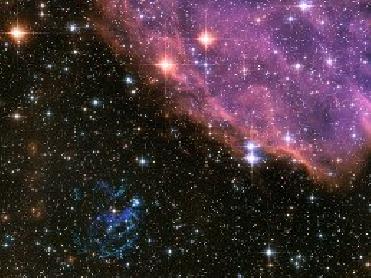
In the nearby galaxy known as the Small Magellanic Cloud, a massive star has exploded as a supernova and begun to dissipate its interior into a spectacular display of colourful filaments, reminiscent of fireworks display. NASA photo
LONDON (PTI): Supernovas have long been used as "cosmic mile markers" to measure the expansion of the universe, but NASA scientists now claim that they have finally discovered what actually sparks the massive stellar explosions.
A team of astronomers led by Marat Gilfanov used NASA's Chandra X-Ray laboratory to study supernovas in five nearby elliptical galaxies and the central region of the Andromeda galaxy -- a spiral galaxy closest to our own, the Milky Way.
They found that most Type 1a supernovas are sparked by the merging of two white dwarf stars, or the collapsed remnant of old stars.
The stars become unstable when they exceed their weight limit which causes a stellar explosion, the Telegraph reported.
"It was a major embarrassment that we did not know how they (supernovas) worked. Now we are beginning to understand what lights the fuse of these explosions, said Gilfanov, an astronomer from the Max Planck Institute for Astrophysics in Germany.
Previously it was thought that Type 1a supernovas were also caused by accretion - when the gravity of a star draws in enough material from a sun-like companion and becomes unstable.
 Previous Article
Previous Article Next Article
Next Article













The Indian Air Force, in its flight trials evaluation report submitted before the Defence Ministry l..
view articleAn insight into the Medium Multi-Role Combat Aircraft competition...
view articleSky enthusiasts can now spot the International Space Station (ISS) commanded by Indian-American astr..
view article